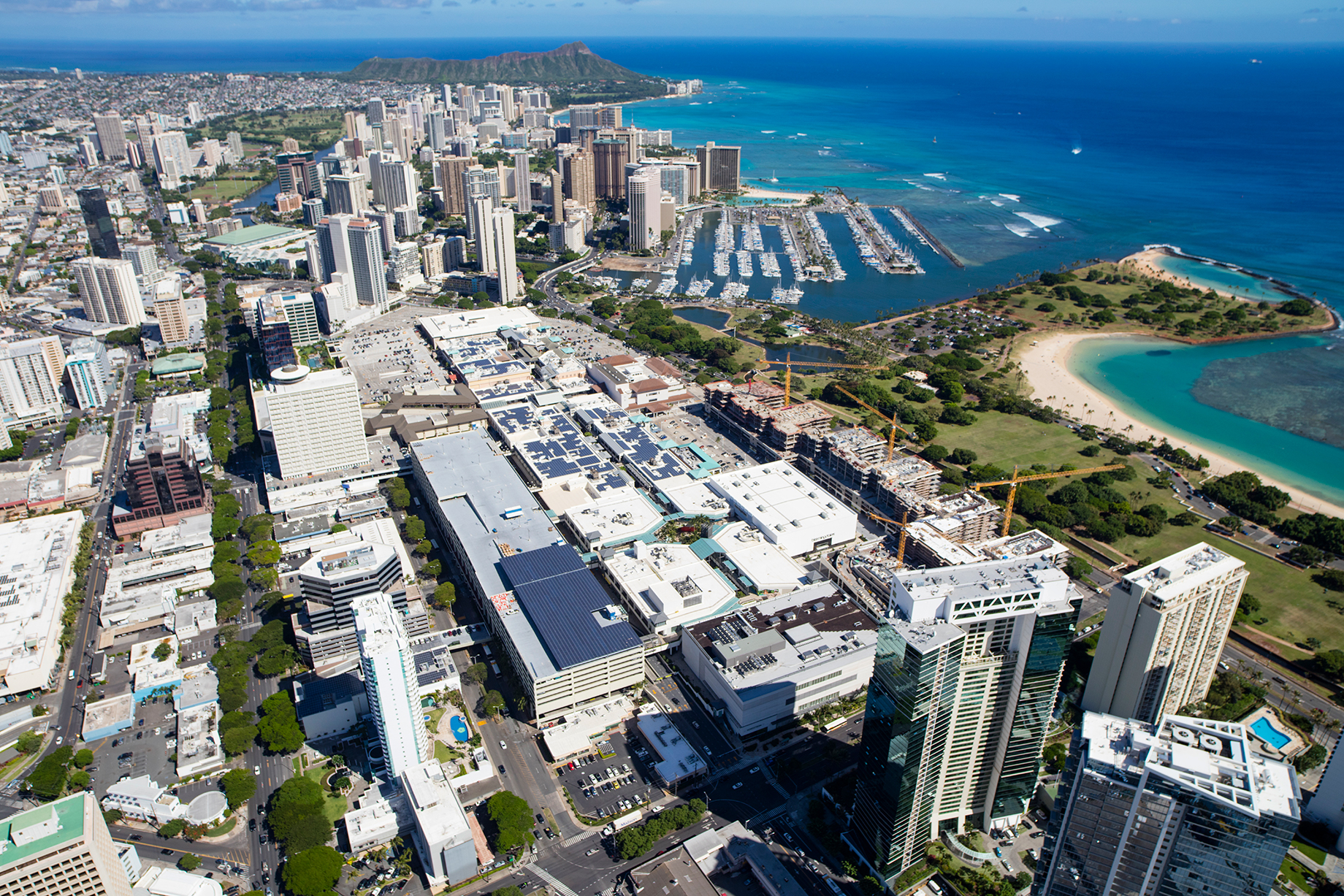GGP is making serious investments in solar energy — so much so that its installed solar capacity ranked seventh last year, out of about 4,000 companies the Solar Energy Industries Association tracked.

Project sunlight In 2017 alone, GGP added a total of about 20 megawatts of solar energy capacity to its portfolio by installing company-owned solar panels, mostly on property rooftops. Ala Moana Center, in Honolulu, is one of the company's sunnier properties
But before GGP could spend $200 million rolling out rooftop or canopy solar panels at a total of 44 properties — everywhere from the sunny Ala Moana Center, in Honolulu; to the Woodbridge (N.J.) Center, with its blustery winters — the company had to start with the basics. “Every building uses a set amount of power,” said Brian Montague, the company's senior vice president for energy and sustainability. “If you’re building a solar program from scratch, you can’t get ahead of yourself. You have to know your base load.”
Back in 2013, GGP made a priority of pursuing energy efficiency to save money and to promote sustainability, Montague says. In analyzing energy usage across the portfolio, Montague and his team moved to replace the older lighting and HVAC systems with high-efficiency alternatives. “We started off with the average age of HVAC units in our portfolio at 35 years old,” he said. “Today they are under 15 years old, on average, portfoliowide.” Montague’s team also replaced roughly 90 percent of the lighting at GGP’s 127 retail centers with LED products. Throw in the efficiencies gained by integrating energy-management systems into the portfolio, and GGP has saved roughly 277 million kilowatt-hours of grid-purchased energy — 51.4 percent in total — across the common areas it controls, says Montague.
These moves set the stage for the next step: investing in solar-power generation. “After we made these improvements [in HVAC and lighting], we knew exactly what our base load [of energy usage] was,” Montague said. “Now we could start putting solar on top of that.”
“GGP plans to add about 12 MW in solar capacity this year. Simply put, it is running out of rooftop space to accommodate the large panels, along with their inverters, racking systems and related equipment ”
In 2017 alone, GGP added a total of about 20 megawatts of solar-energy capacity to its portfolio by installing company-owned solar panels, mostly on property rooftops. In states like New Jersey, where electricity rates are high and the winters keep electric heaters humming, the savings were unmistakable, says Montague. “It was the highest and best use of our money,” he said.
When SEIA published its annual Solar Means Business rankings this past January, GGP’s 50 megawatts ranked seventh overall in installed solar capacity. That put the company ahead of Amazon.com (10th) and IKEA (eighth). Adding more than 40 megawatts of solar in 2017, Target earned the top spot in the report for the second year in a row. The discounter now has a total capacity of 204 megawatts, according to SEIA. GGP was the only retail landlord to make the top 25, but the list does include retailers Costco, Kohl’s, Macy’s and Walmart.
GGP has plans to add about 12 megawatts in solar capacity this year, Montague says. Simply put, the firm is running out of rooftop space to accommodate the large panels — along with their inverters, racking systems and related equipment. In the years ahead, though, innovation in solar technologies could shrink the average size of a panel while radically increasing its energy output, Montague notes. “Fast-forward five or 10 years, and we might be looking at solar panels the size of a sheet of paper that can produce 200 watts of power,” Montague said. “If that happens, you’re talking about a truly disruptive piece of technology.”
Blanketed with such tiny, high-powered panels, landlords’ rooftops could become major energy producers. “That would mean more retail properties were totally energy-independent and able to net-meter or sell lots of power back into the grid, when allowed by utilities,” Montague said. “It will be very interesting to see what happens, but, already, investing in solar has been a big win for GGP.”
By Joel Groover
Contributor, Commerce + Communities Today
